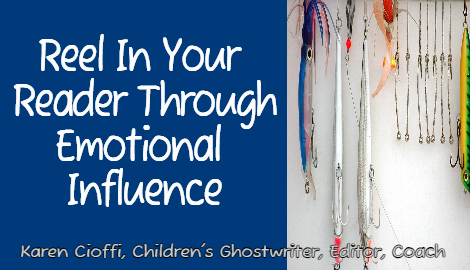Just like a fisherman uses different lures to catch fish, writing has its own toolkit of techniques and strategies to reel in readers through emotional influence.
Influencing readers’ emotions in fiction writing is a powerful tool that can transform a simple story into an absorbing and unforgettable one.
To master this skill, writers need to understand the psychological underpinnings of emotion and the narrative techniques that can draw strong emotional responses.
Here are four key strategies to effectively influence reader emotions in fiction writing:
1. CREATE RELATABLE CHARACTERS
Develop deep, multi-dimensional characters:
Readers are more likely to feel emotionally invested in characters who are well-developed and realistic. Give your characters flaws, dreams, fears, and distinctive personalities.
Use internal conflicts:
Show your characters’ inner struggles as he journeys through the conflict. When readers can empathize with a character’s internal battles, they become more emotionally involved.
Show growth and change:
Characters who grow and evolve over the course of the story are more engaging. Readers will root for them, feel their pain, and celebrate their successes.
2. BUILD EMOTIONAL STAKES
Raise the stakes:
The higher the stakes, the more invested readers will be. Create situations where the consequences of failure are significant for the characters.
It doesn’t have to be a life-or-death situation to create this reader investment, but it needs to be significant to the character.
Think of The Terminator with Arnold Schwarzenegger and Linda Hamilton. Failure for Sarah Connor was death.
But for a child, failure could mean working hard and not making it on the sports team, not being able to make friends, not being able to stop the bully, losing a loved one, or having to move. These are all highly significant scenarios for a child.
Failure could also be not realizing a dream.
Create tension and suspense:
Use suspense to keep readers on the edge of their seats. Foreshadowing, cliffhangers, and pacing can all contribute to building tension.
Introduce conflict:
Conflict drives a story and keeps readers emotionally engaged. It can be internal (within a character) or external (between characters or between a character and their environment).
3. USE DESCRIPTIVE LANGUAGE AND IMAGERY
Show, don’t tell:
Instead of telling readers how a character feels, show it through their actions, dialogue, and physical reactions.
For example, instead of saying, “She was sad,” describe her trembling hands, the tear rolling down her cheek, or her distant gaze.
Instead of saying, “John was angry,” describe his clenched fists, set jaw, reddening face, and the sharpness of his words.
Use vivid imagery:
Descriptive language that appeals to the senses can immerse readers in the scene, making emotions more palpable. Use metaphors, similes, and detailed descriptions to paint a vivid picture.
Here’s an example of using vivid imagery from the article Showing vs. Telling:
Weeping softly in her hands, her body began to tremble; then, the tears gushed. An indescribable ache took hold—in the very depths of her soul—an ache in a place never felt before. A tortured scream crept up into her throat, ready to burst forth. She fell to her knees and buried her face in the mattress. Grabbing a pillow, she pulled it over her head. A blood-curdling scream erupted.
4. HARNESS THE POWER OF SETTING
Create an emotional atmosphere:
The setting can significantly influence the mood of a scene. A stormy night can heighten a sense of fear or despair, while a sunny day might enhance feelings of joy or hope.
Reflect characters’ emotions through the environment:
Use the setting to mirror or contrast with a character’s emotional state.
For example, a character experiencing internal turmoil might be surrounded by a chaotic or oppressive environment.
In my children's chapter book, Walking Through Walls, it's the opposite. The protagonist Wang’s senses became heightened when his purpose began to awaken. He noticed his favorite flower, the lemon lilies, in full bloom and draped across the landscape. And he noticed how good they smelled. He also noticed for the first time the purple-tipped snake that had been following him.
SUMMING IT UP
Reeling in your reader through emotional influence is essential for a writer. You want your reader to be thoroughly engaged. You want the reader to feel motivated to turn the pages, and for your book to have a lasting impact.
It takes a combination of various techniques to get the job done. Relatable characters, emotional stakes, descriptive language and imagery, and the setting are four of the writing techniques that will help you influence your reader’s emotions and reel them in.
I’ll be back next week with more helpful techniques.

I’m a working children’s ghostwriter, rewriter, editor, and coach. I can help turn your story into a book you’ll be proud to be the author of, one that’s publishable and marketable.
OTHER HELP I OFFER:
HOW TO WRITE A CHILDREN’S FICTION BOOK
A DIY book to help you write your own children’s book.
PICTURE BOOK AND CHAPTER BOOK COACHING
Four to ten-week coaching programs.
WRITERS ON THE MOVE PRESS.
Self-publishing help for children’s authors.
You can contact me at: kcioffiventrice@gmail.com. Or give me a call at 347—834—6700. (Please leave a message- I’ll get back to you as soon as I can.)


2 thoughts on “Reel in Your Reader Through Emotional Influence”